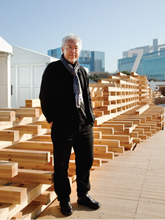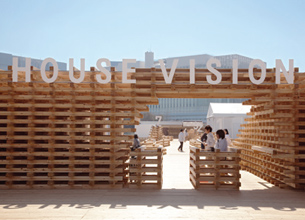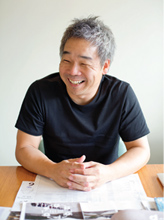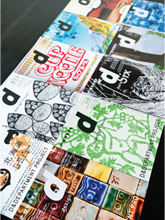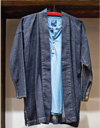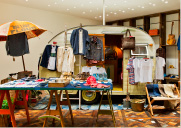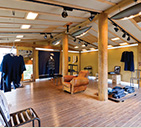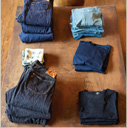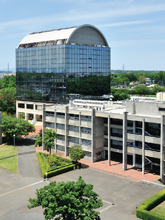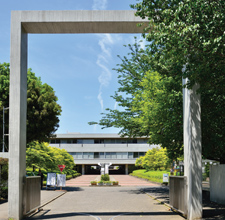- トップページ >
- 日本の魅力 >
- LOOKING TOWARDS THE FUTURE [英語][内閣官房] >
- Culture Unleashing creativity
LOOKING TOWARDS THE FUTURE
Culture - Unleashing creativity
Japan's creative industries are reinventing retail, proving that design can freshen up travel and improve lifestyles. Forward-thinkers are also stretching the boundaries of anime and showing how culture is more than just the traditional arts.

CREATIVE INDUSTRIES
Spreading the word
During New York's Fashion Week, Japan plans to put on a show of its own. Funded by the Ministry of Economy, Trade and Industry and organised by department-store chain Mitsukoshi-Isetan, the event, Japan Senses, will feature gallerists, a sake brewer, restaurateurs and a fashion designer. The programme is one of 13 events showcasing everything from ramen and anime to gyaru(“gal”) fashion in cities from Jakarta to Paris over the coming months. The ¥460m (€3.5m) Cool Japan Strategy Promotion Project aims to raise the profile of the country's creative industries.
meti.go.jp/english/index.html
Q&A
Kenya Hara FOUNDER, HARA DESIGNINSTITUTE
In 2013, Hara organised House Vision Tokyo, an architecture exhibition staged on a plot facing Tokyo Bay. An all-star cast of Japanese architects – including Kengo Kuma, Toyo Ito, Shigeru Ban and Sou Fujimoto – worked with Tsutaya Books, Lixil, Honda, Ryohin Keikaku (Muji) and others on seven homes.
Question: What is House Vision?
Kenya Hara: It's an exhibition that offers ideas about the future home. The seven we showed might not be built right away – some are futuristic, some practical. We were mainly interested in trying to change conventional thinking. We want consumers to realise that a home shouldn't be designed by construction firms; consumers should create their own. A home should reflect the inhabitant's lifestyle.
Q: How can this help Japan?
KH: By rethinking what a home is, Japan can spread its influence to other Asian countries.
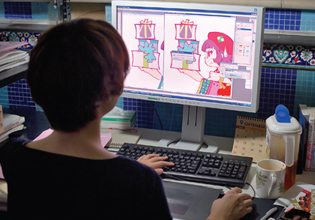
ANIME
Screen dreams
Eiko Tanaka, president of anime firm Studio 4ºC, is on a mission to help Japan's talented anime directors reach a global audience. Her Tokyo production company has worked with studios in Russia, France and the US and boasts an impressive body of work that is expanding the possibilities of the genre.
studio4c.co.jp
Q&A
Kenmei Nagaoka FOUNDER,D&DEPARTMENT
Question:Why does D&Department focus on longlasting Japan-made products?
Kenmei Nagaoka: We've been through an economic downturn and natural disasters. We need to think about everyday items that can be used for a long time. This country has lost its sense of the value of things.
Q: So far you have released 10 of 47 design-centric travel-guide books from Japan's prefectures. What is behind your decision to focus on individual districts?
KN: For decades tourism in Japan has been a case of visiting places in a big tour bus but if that were to continue it wouldn't inspire the digital generation to travel. I want younger Japanese to see that each prefecture is unique.
d-department.com
FASHION
Dress to impress
Japan's reputation for style is manifested in the home-grown labels that make a virtue of its craftsmanship. “Made in Japan” is a selling point for brands such as 45rpm, which is known for denims and indigo fabrics dyed the traditional way. The company works closely with factories in Japan to create the best textiles and has its flagship store in a picturesque wooden house.
Cult label Visvim has fans around the world but stays close to its roots. Founder and creative director Hiroki Nakamura started the company back in 2001 and offers a mix of hi-tech fabrics and oldschool techniques, which include garments dyed in mud and persimmon juice. Moonstar's Shoes Like Pottery project takes the rubbersoled shoe to a new level: a flexible and hardwearing trainer with a simple silhouette made with an attention to detail that's worthy of a footwear company founded in 1873.
45rpm.jp; visvim.tv; shoeslikepottery.com
DESIGN
Well schooled
Musashino Art University (otherwise known as Musabi) is one of Japan's best-known art and design schools, with an array of courses on offer and an illustrious list of alumni in fields ranging from manga to sculpture. Located in Tokyo, the university was founded in 1929. International exchange is strongly encouraged and visiting professors put in regular appearances.
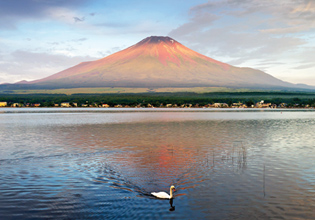
MOUNT FUJI
Natural wonder
Mount Fuji has inspired haikus, painters and pilgrims for centuries and is now a Unesco World Heritage site, attracting more than 300,000 climbers a year.
whc.unesco.org/en/list/1418








